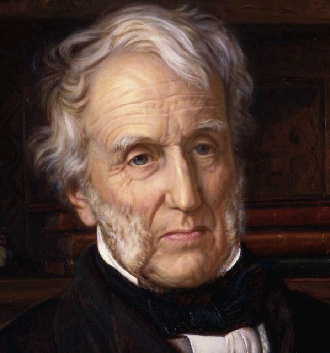Description
William Holman Hunt's Stephen Lushington, painted in 1863, is a prime example of the artist's distinctive approach to painting in the context of the Pre-Raphaelite movement, of which he was one of the founders. Known for his meticulous use of colour and intense symbolism, Hunt here offers a depiction that transcends the merely portraitural, encapsulating the essence of the subject in a way that is both personal and emblematic.
In this painting we are to observe Stephen Lushington, a notable man of the clergy, shown in a visually evocative setting. His central figure is carefully framed in an atmosphere of serenity and contemplation. The composition is organised around Lushington, whose upright and dignified posture is contrasted with the softness of the natural environment around him. This choice of presentation highlights his character and his role in society; it is not simply a portrait, but a representation rich in meaning and context.
The colours used by Hunt are of exceptional luminosity. Vibrant shades of greens and blues dominate the background, which suggests a carefully cultivated garden and symbolises nature and spirituality at the same time. This use of colour is not superficial; each nuance seems to be charged with meaning, creating a dialogue between the human figure and the natural world, a recurring theme in Hunt's art. Of particular interest is the way the light plays on the folds of Lushington's clothing, revealing details that add depth to his figure and reinforce the symbolism of a man in touch with both his spiritual life and the divine creation that surrounds him.
Hunt employs a meticulous attention to detail that is one of the most prominent characteristics of the Pre-Raphaelite movement. The texture of the clothing, the delicate flowers in the garden, and the elements of the background are all painted with a love of precision that almost borders on the photographic. Each element, from Lushington's introspective expression to the arrangement of the natural elements, is composed in such a way that the viewer not only observes, but also feels the atmosphere of contemplation and peace.
A fascinating aspect of Stephen Lushington is that, in addition to its faithful and symbolic representation of the subject, the work also reflects the relationship between art and religion, a prolific theme in Hunt's work. The subject portrayed, a high-ranking cleric, is integrated into a cultural context where spirituality and nature are considered reflections of the divine. The painting can also be interpreted as a commentary on the role of religion in everyday life, inviting the viewer to consider the harmony between human beings and their sacred surroundings.
In conclusion, the work “Stephen Lushington” not only reveals Holman Hunt’s skill as a painter, but also invites reflection on the intersection between the individual, nature and divinity. In his work, Hunt manages to encapsulate a series of themes that continue to resonate in contemporary artistic practice, establishing a bridge between the human and the transcendent that remains relevant in the analysis and appreciation of 19th century art. Through his practice, Hunt does not simply document a figure, but transcends conventional portraiture, creating a work that is rich in symbolism and a deep understanding of human nature.
KUADROS ©, a famous painting on your wall.
Hand-made oil painting reproductions, with the quality of professional artists and the distinctive seal of KUADROS ©.
Painting reproduction service with satisfaction guarantee. If you are not completely satisfied with the replica of your painting, we will refund 100% of your money.

